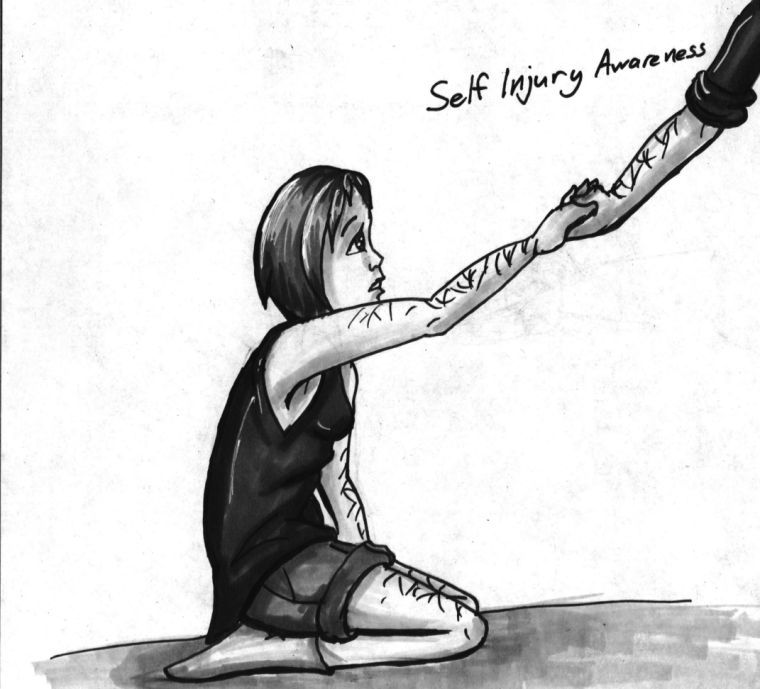Self-Injury Awareness Day is a symbol of hope
February 24, 2013
An orange ribbon: a symbol of hope for a misunderstood problem.
March 1 is National Self-Injury Awareness Day, a day meant for learning about self-injury and providing resources to those who need help.
It’s important for people to know what self-injury is. Self-injury, also known as self-harm or self-mutilation, is the intentional harming of oneself. To Write Love On Her Arms (TWLOHA), a nonprofit group aimed at helping those struggling with addiction and suicide, said many people self-injure by means of cutting, burning, picking or interfering with wound healing and bruising or breaking bones, among other things.
Self-harm is more common than you might think. TWLOHA also said “experts estimate that 4 [percent] of the population struggle with self-injury,” and Mental Health America estimates that “about two million people in the U.S. injure themselves in some way.”
College students can be particularly vulnerable to self-injury. While commonly considered a problem among adolescents, Jane E. Brody of The New York Times reported in May 2008 that “anonymous surveys among college students suggest that 17 percent of them have self-injured….”
However, it’s difficult to know exactly how many people self-harm because it’s such a closeted problem.
As a recovering self-injurer, I want people to know that this happens immensely more than it should. Drinking or using drugs to “escape the pain” or to “feel alive” is similar to self-injury. Self-injury can be horribly misunderstood. In general, people who cut or burn themselves aren’t trying to kill themselves; instead, they are trying to escape some sort of emotional pain or are trying to escape feelings of emptiness.
Alcohol, marijuana and other drugs have become more commonplace and more accepted. Yet, a stigma still centers on self-injury. Some don’t understand why people self-injure, and others assume that self-injurers are crazy. Society tends to find cutting or burning oneself as strange and something only mentally ill people do.
The fact is, when it comes to self-injury, method doesn’t matter.
Self-injury is a sign that a person is having problems. Researchers at Cornell University said that “regardless of the specific reason provided, self-injury may best be understood as a maladaptive coping mechanism….”
Whether it is depression, stress or past traumas, self-injury is all about coping. That’s what makes self-injury an “equal opportunity” problem: we all, at some point, have had stressors in our lives. The only difference is that some just don’t know how to healthily cope.
If you struggle with this, my message is that there is hope. It’s never too late to get help, and it’s never too late to stop. Like any addiction, self-harm can be hard to quit, but it’s possible, and help is out there. If you know someone who is struggling, don’t stay silent. Self-injury is a cry for help, and it’s your job to listen.
On March 1, bring out the orange ribbon and show your support, and if you’re dealing with self-injury, as Winston Churchill said, “Never, never, never give up.”







